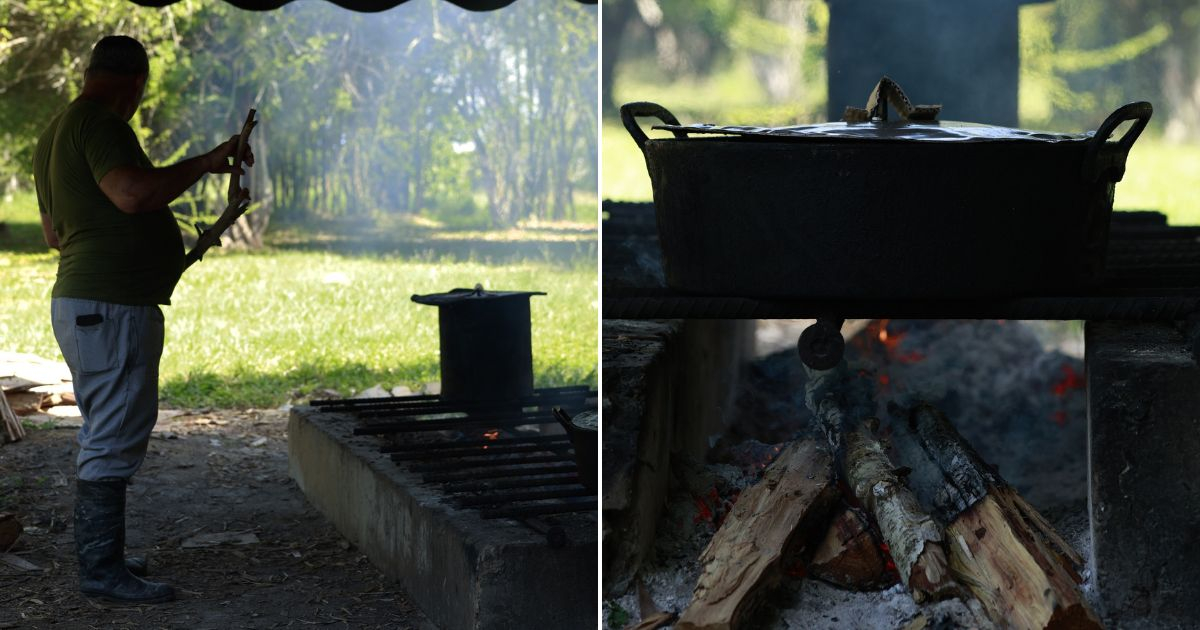While millions of Cubans are grappling with frequent and extended power outages, often resorting to makeshift cooking methods in dire conditions, the National Botanical Garden in Havana has taken to social media to highlight wood-fired cooking as a tribute to tradition and Cuban heritage. In today’s climate, such a celebration seems less like an authentic homage to cultural values and more like an attempt by the official narrative to romanticize hardship and mask necessity as identity.
Under the theme “Discover the Flavors of Traditional Cuban Wood-Fired Cooking,” the garden promotes a culinary experience featuring dishes like roasted pork, congrí, and yuca with mojo, all prepared using wood-fired methods amid the park’s lush greenery. While no one disputes that wood-fired cooking is part of Cuba's culinary legacy—having been a customary practice in rural areas for generations—the current context, where millions lack regular access to gas or electricity for cooking, makes this exaltation seem, at the very least, out of touch.
By presenting wood-fired cooking as a gourmet experience amid a severe energy crisis, it risks appearing disconnected from the harsh reality many face. This is not merely a cultural nod but rather a perilous normalization of scarcity, as if returning to past methods were a choice rather than a desperate necessity.
In a country where many resort to makeshift electric coils, cook with wood out of necessity, or endure long lines for a gas cylinder, celebrating this method without acknowledging the surrounding struggles overlooks the daily hardships of a significant portion of the population. Traditional Cuban cuisine is undoubtedly a cherished heritage, but so is the right to cook with dignity. Unfortunately, dignity is not provided by smoke and firewood but through reliable energy and stability.
The Food Monitor Program (FMP), an independent organization monitoring basic service access in Cuba for the past three years, recently warned that over 9 million Cubans are currently cooking in precarious, unsafe, and dangerous conditions amid one of the country’s worst energy crises. This figure is derived from the latest Cuban Population and Housing Census and FMP’s own studies, which estimate around 1.7 million households rely on liquefied petroleum gas (LPG), another 2 million depend solely on electricity, and about 220,000 use manufactured gas.
The remainder of the population is left vulnerable to power cuts, gas supply halts, or primitive methods. With an average household size of 3 to 4 people, more than 9 million Cubans face severe difficulties or complete inability to cook at home, the organization stressed. The report highlights that with blackouts lasting up to 20 hours a day, families cook whenever electricity is available, regardless of the hour. Meals are prepared at odd hours, consumed cold or immediately, and many have reduced daily meals.
Even before the most recent collapse, 33% of households had started skipping meals as a survival tactic, while 25% admitted going to bed hungry. The most alarming trend is the increase in wood and charcoal cooking. Thousands of families, unable to use electricity or gas, are constructing makeshift stoves from recycled materials.
Understanding the Cuban Energy Crisis and Its Impact on Daily Life
Why is wood-fired cooking being promoted by the National Botanical Garden?
The National Botanical Garden is promoting wood-fired cooking as a tribute to traditional Cuban culinary practices and heritage, despite the ongoing energy crisis impacting many Cubans.
How are Cuban families coping with the energy crisis in their daily cooking?
Many Cuban families are coping by using makeshift electric coils, cooking with wood, or enduring long waits for gas, often preparing meals at irregular hours due to frequent power outages.
What does the Food Monitor Program report about the current cooking conditions in Cuba?
The Food Monitor Program reports that over 9 million Cubans are cooking in precarious and unsafe conditions due to the severe energy crisis, with many resorting to wood and charcoal as alternatives.
